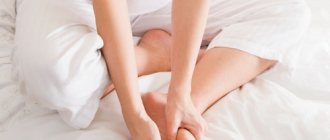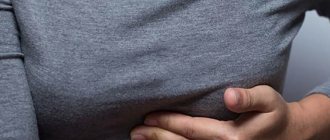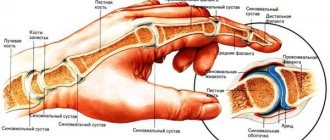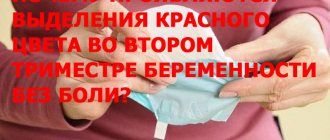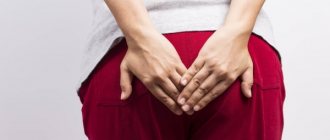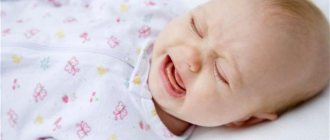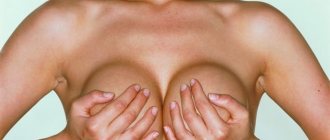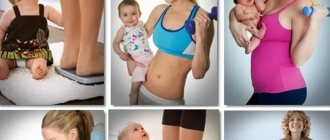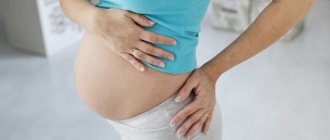Breastfeeding is no less exciting a process for a young mother than the birth itself and the first meeting with the baby. It has long been proven that mother’s milk for a child plays an important role in the formation of the digestive system and immunity. Therefore, it is important that feeding takes place calmly, bringing pleasure to both the baby and the mother. But under the influence of certain factors, a woman may feel that her nipples hurt when feeding. There is no need to panic - you can determine what to do quite easily by finding out the cause of the pain.
Baby is not latching on correctly
The most well-known and common reason that leads to microtrauma of the nipples is the child’s inability to latch onto the breast. This happens because it is not properly applied to the food source. Breastfeeding, although a natural process, still has its own rules. This is necessary so that the young mother does not complain that her nipples hurt after feeding.
How to identify improper nipple latching:
- slipping when sucking;
- GV is accompanied by severe pain;
- the baby makes strange sounds that do not sound like swallowing;
- the baby’s lips are not extended, but curled up;
- the baby’s mouth did not completely capture the areola of the nipple;
- There is no feeling of relief after feeding.
If you continue to feed your baby despite the signs, damage in the form of bleeding cracks may soon appear on the nipple, which will lead to further infection.
Negative consequences can be avoided. To do this, you need to listen carefully to the obstetrician, who, while still in the maternity hospital, tells you how to properly breastfeed your baby. If for some reason it was not possible to obtain this information, your mother, grandmother, friend, or, in extreme cases, a breastfeeding specialist who can be invited to your home can always advise. Basic Rules:
- The breast is held with fingers placed in the shape of the letter C, lying parallel to the baby’s lips, the lower part is at the level of the baby’s chin, and the nipple is at the level of the nose;
- the baby grasps the fleshy part of the mammary gland with the lower jaw, the head is not fixed;
- When the baby is already eating, the areola should be visible above the upper lip.
It is important to know that in addition to pain, incorrect grip can lead to underfeeding, abnormal weight gain and digestive problems in the child.
Thrush is one of the very common diseases. Moreover, not only vaginal thrush occurs, but also its other varieties. In nursing mothers, yeast infection on the nipples occurs quite often, but, alas, gynecologists, pediatricians and surgeons rarely make the correct diagnosis. Yeast infection is one of the very common diseases. Moreover, not only vaginal thrush occurs, but also its other varieties. In nursing mothers, yeast infections on the nipples occur quite often, but, alas, gynecologists, pediatricians and surgeons rarely make the correct diagnosis.
Attention! This article is posted here for information, and not as a guide to action! If you suspect you have nipple thrush, we ask you to consult a doctor who has already had experience in treating this disease. Thrush is caused by candida (yeast) - fungi that live on any mucous membranes and on the skin. Most often, a fungal infection on the nipples is diagnosed visually and by the sensations of the nursing mother. You can take a scraping from the surface of the nipple (such an analysis is done in vendi dispensaries), but such a test, like a milk sample, gives an unreliable and often false negative result. HOW TO DETERMINE THRUST IN A MOTHER?
- The nipples may appear swollen, scaly, flaky, moist, or have tiny blisters. The color is often bright pink. The nipples may be very itchy.
- Severe burning pain that may be on the surface of the nipples or may be felt deep inside the breast. The pain often continues during or between feedings—and especially immediately after. (Nipple pain caused by improper latch and attachment usually ends after feeding). Sometimes a sharp, shooting pain radiates from the nipple to the chest, back or arm. Nipples are very sensitive and can be damaged by clothing rubbing against them. It can be very painful to shower or even touch your breasts. Mothers describe the pain as “hot needles.”
- Please note that nipples can also look completely normal but be terribly painful (just as a baby's mouth can be infected but not have white "plaques"). In our experience, this was exactly the case: the nipples were either completely normal or injured, as if they were normal cracks.
- Mom may have a worsening vaginal yeast infection, or a fungal infection in the nails or in the corners of her mouth.
HOW TO DETECT TRUSH IN A CHILD?
- Creamy white spots or “plaques” on the lining of the mouth (gums, cheeks, or tongue). The spots may appear pearly and may be surrounded by redness. If you gently scrub the stain, redness will appear underneath (as opposed to a normal milky coating on the tongue). The baby may be fussy and sucking may cause pain. He may stop breastfeeding during feeding, or refuse to breastfeed at all. But usually, thrush in a baby's mouth does not cause the same pain as it does on the mother's nipples.
- It is also possible that the baby will not have any visible signs.
- Candida can also cause a rash in your baby's diaper area. The rash is red or bright pink, sometimes scaly, and may contain small raised red spots or look like pimples. The rash may be limited or may be spread over a large area. Using standard diaper rash treatments like Vaseline or Desitin will not eliminate the rash caused by yeast and may actually make the condition worse because the yeast consumes the oils from ointments as well as the starch from baby powders to grow.
POSSIBLE CAUSES OF THRUST IN MOTHER AND CHILD
- Mom took antibiotics. Using antibiotics speeds up the rapid growth of yeast by killing off the “good” bacteria that normally prevent fungi from multiplying quickly. In our experience, most often mothers with a cesarean section had thrush on the nipples.
- During pregnancy, my mother had a vaginal yeast infection. Thrush is common in pregnant women because high levels of estrogen cause high levels of sugar, which feeds the yeast.
- Mom’s nipples are damaged and do not heal for a long time (more than one to one and a half weeks).
- Mom was on steroids or hormonal birth control and has a chronic illness such as diabetes or anemia.
HOW DOES THRUST AFFECT BREASTFEEDING? Milk production may decrease. This happens because pain reduces the mother's milk supply, and babies with thrush often do not breastfeed effectively due to inflammation in the mouth. Thrush can cause blocked milk ducts and mastitis. Because yeast grows in a warm, moist environment, the infection can easily pass back and forth between a mother and her nursing baby. Therefore, both should be examined and, if necessary, treated. This is especially important if one of the pair does not have obvious signs. For example, a baby may have white plaques in the mouth, but mom's nipples may not be sore—or, conversely, the nipples may be sore but the baby's mouth and diaper area are clear. If one of the mother-child pairs is treated, then re-infection is possible in a week or two. LET'S START THE FIGHT WITH THRUST: MOM'S 12 STEPS Important: before starting treatment for thrush, be sure to rule out other diseases and causes that can also cause nipple soreness. Check for improper attachment or posture, mastitis, eczema, herpes, ringworm, and psoriasis. To do this, be sure to consult your doctors.
- Feed more often than before, but for a shorter time. Start feeding on the side where the breast is least inflamed. If you find it too painful to feed, you can temporarily express your milk and feed your baby by cup or syringe without a needle until the pain subsides.
- Wash your hands with hot water and soap before and after each feeding, after using the toilet, and before and after changing a diaper.
- Drink green tea 3 or 4 times a day. This will help cleanse your body of excess yeast.
- Remove from your diet foods that contain a lot of sugar and/or yeast (beer, wine, carbonated sweet drinks, bread, desserts, condensed milk, etc.). You can take lactobacilli and bifidobacteria - they promote the growth of “friendly bacteria” that will contribute to your recovery. Regular yogurt is not enough to fight the infection.
- Treatment of nipples can begin with a solution of soda - a teaspoon in a glass of water - wash the nipples after feeding as often as possible. After the procedure, air dry your breasts. However, such treatment may be ineffective.
- Use antifungal creams such as nystatin ointment, Candida cream, or Monistat (containing miconazole). They can be bought without a prescription. Your doctor may also prescribe an antifungal cream like Nizoral (containing ketoconazole). Although Nystatin has been the most popular antifungal drug for many years, we cannot consider it the best treatment for persistent infections.
- If the pain is severe, apply a little cream after each feeding (6-8 times a day) for 24 hours. Then use 3-4 times daily. The cream is quickly absorbed and does not need to be washed off before feeding. If some ointment remains on your nipple, you can gently wipe your nipple with a damp, warm towel before feeding.
- If the inflammation is very severe, you can apply syntomycin emulsion 2-3 times (be sure to wash it off before feeding!) in addition to the antifungal cream.
- Avoid wearing breast pads, but if you must use them, change them with each feeding. Keep your nipples as dry as possible.
- Avoid synthetic underwear and tights and use cotton underwear. Do not wear tight clothing, tights or swimsuits until treatment.
- If you have a vaginal yeast infection (thrush), be sure to consult your gynecologist. Perhaps he will advise not only local treatment, but also systemic treatment (fluconazole - flucostat, Diflucan and analogues).
- If you are expressing milk, you should give it to your baby while you are both being treated for thrush; do not save it for later use or freeze it, as freezing milk does not kill all the yeast. After 24 to 48 hours of using antifungals, you should feel some improvement. Sometimes it becomes easier after the first use. In some cases, there is a temporary deterioration before the condition improves. Continue treatment for 48 hours. If you don't see improvement by this time, try other antifungal ointments. In some cases, a yeast infection on a mother's nipples does not respond to topical treatment. If the current treatment is ineffective, you should consult a doctor for systemic treatment and to choose a painkiller for the period of pain. Among all antifungal drugs, Diflucan is one of the most well tolerated. Adverse effects have been reported in very rare cases. Diflucan is effective, but also very expensive - up to 400-500 rubles per tablet. Ask your doctor about analogues.
HOW TO HELP YOUR BABY
- To treat thrush in a child's mouth, nystatin drops or Candida solution are used. It is important to remove any remaining milk after each feeding - it can be a source of food for the yeast. Rinse your child's mouth with water - encourage him to sip from a cup of water, or wipe the inside of his mouth with a damp towel. Apply 8-10 drops of Candida solution to gauze, wrap it around your finger and wipe the child’s oral mucosa 2-3 times a day. This treatment must be continued for at least 10 days. If you see that nystatin drops or Candida solution have not cured thrush in your child's mouth, ask your doctor about a pediatric dose of Diflucan or equivalents. In November 1995, Diflucan was approved for pediatric use for infants six months of age or older, and has a safe dosage for infants one day of age and older. ATTENTION - Sodium tetraborate (borax in glycerin) is prohibited for children in Europe due to its toxic effects!!!
- Boil any object that might go in your baby's mouth (toys, nipple shields, and pacifiers) for 20 minutes every day. Add some vinegar or baking soda to the boiling water.
- If your baby develops thrush in the diaper area, contact your pediatrician for treatment recommendations. By the way, it often happens that the ointment that a mother uses to treat nipple fungus is also suitable for her baby.
- In case of severe damage and inflammation of the skin, you should consult a dermatologist.
- Leave your baby's bottom without a diaper or diaper in the air as often as possible. Every time you change a diaper, wash your baby thoroughly with warm water. Dry your skin well.
- During the treatment period, do not use cosmetic baby wipes; they leave moisture on the baby’s skin and can additionally irritate it.
NEVER GIVE UP! A yeast infection is very persistent in the body, and sometimes it takes a long time for the fungus to go away completely. It appears that some women are more likely to develop yeast infections than others. You need to monitor your body very carefully after treatment so as not to miss the return of the disease. The main wish to mothers: be persistent in treatment! Thrush can be very painful while breastfeeding, and you may even consider weaning your baby. But remember that even if you decide to stop breastfeeding, you will still need to treat your nipples. Therefore, weaning will not free you from this problem. But by maintaining feedings and curing yourself and your baby, you will receive great satisfaction and confidence in your mutual recovery. Information used from an article by Anna Smith (in 2004, the article was located at https://www.breastfeeding-basics.com/html/candida.html)
Oksana Mikhailechko together with Tatyana Ilyushina, pediatrician. 2004.
Photographer Oksana Lugovaya
Comments:
- In contact with
Futuresbroker
How to adapt nipples to feeding
The only reason that nipples hurt when feeding is that they have not yet adapted to such increased attention from the baby. Unpleasant sensations most often occur in the first 10-15 seconds, after which all the negativity goes away and mommy can calmly enjoy feeding.
The next day after childbirth, pain may also occur, which continues for about another month. If after this time the baby is accustomed to latching onto the breast correctly, the pain will stop.
The most common reason for adaptation is that the baby licks the thin top layer of epithelium during feeding, as a result of which the nerve endings are exposed and the woman experiences pain.
Over time, the mother's breasts adapt to their new role, and the nipples can withstand long feedings due to the fact that the skin becomes rougher.
Problem or not?
Flat nipples are an individual feature of the physiological structure of the body.
If you have symptoms and discomfort (may indicate a disease or pathology), you should consult a doctor. If no troubles arise, then the only issue that needs to be clarified is lactation. Some women, after giving birth, notice inverted or flat nipples, which causes worries and questions: is breastfeeding possible with such a problem, is it possible to develop and correct them? You can check whether the nipples are really flat or inverted in the following way: press your fingers on the top and bottom of the nipple on the areola. If, when pressed, it goes inward, the nipples are retracted; if it is on the same level with the areole, it is flat; if it protrudes, then there is nothing to worry about at all.
Causes of nipple pain
Incorrect care . Before putting your baby to the breast, you should never wash your nipples with soap. Any soap, no matter how moisturizing and nourishing it may be, dries out the skin. Therefore, when the baby begins to suckle, the delicate skin, which has become dry due to frequent washing, will easily crack. This happens due to the fact that during washing and periodic feeding, the protective film that covers the nipple of a nursing mother is erased. The film is not skin, and it is difficult to notice, but when it disappears, the nipples become sensitive to any external irritants. Gynecologists recommend washing your breasts no more than 2 times a day during normal showering.
Uncomfortable underwear. During lactation, a woman should not wear bras that compress the breasts and nipples with seams. Wearing synthetics is unacceptable and can lead to an allergic reaction, which is certainly accompanied by itching. In this case, scratching will lead to injury and pain after breastfeeding.
Developmental anomalies. A woman may have naturally flat nipples, and this will not allow the baby to latch onto the areola well. The process will go wrong, which will cause pain and discomfort to the nursing woman. There may also be large moles on the nipple, folds from birth, which can also become a hindrance for the baby.
Lactostasis. Improperly organized breastfeeding often leads to stagnation of milk or lactostasis. Stagnation is always accompanied by severe pain and heaviness in the chest, the skin becomes tense and inflamed, and infection can penetrate through microcracks, which will lead to mastitis.
If the above factors affect the body, various nipple deformations appear.
- Scuffs, abrasions and blisters . First, one of the areas of the nipple turns red, then, if the irritant is not eliminated at this stage, abrasions form. Often such injuries occur when the nipple is incorrectly grasped in the lower part of the chest, when the baby rubs the delicate skin with its lip or tongue.
Blisters and abrasions may appear if the mother carelessly and roughly pulls the baby away from the breast due to pain and sensitivity. At the same time, the baby, who is not as weak as he seems, squeezes his gums even more, causing damage. If the mother does not have the strength to endure pain during feeding, doctors recommend inserting a finger into the corner of the baby’s mouth to loosen the vacuum and thereby eliminate pain.
- Cracks . This form of injury is an advanced form of abrasions and inflammation. Cracks appear at the tip, at the base, and on the side of the nipple. It looks like normal cracked skin, but when fed or pressed it causes sharp pain. The wound exudes ichor, and often blood, so there is a risk of contracting an infection.
With these types of injuries, a woman will definitely need to consult a doctor , who will conduct an examination, determine the severity of the disease and prescribe the necessary treatment. The specialist may also recommend not breastfeeding the baby for a while, but expressing milk. Immediately after recovery, the mother will again need to accustom her baby to breastfeeding, this time taking all precautions.
- Vascular spasms . This malaise is expressed by acute pain after feeding, and the nipple turns white. The unpleasant sensations continue for several minutes, after which the nipple acquires its previous color and the pain becomes throbbing.
When a woman’s nipples hurt when feeding, this does not mean that the baby is to blame. Often the cause can be external irritants, for example, poor nutrition, cheap underwear or its complete absence, mechanical injuries. To somehow alleviate the symptoms, immediately after feeding you can apply a heating pad , a warm towel or a sock with warm salt to your breast. A nursing mother should completely exclude caffeine, smoked foods and other tasty foods that are harmful to the skin from her diet.
Causes of sore nipples from a child
- Short tongue or hyoid frenulum, long tongue.
- Anomalies of the oral cavity - palate (high, grooved), bony protrusions on the gums or palate that rub the nipple.
- Neurological problems that interfere with normal sucking.
- Difficulty breathing can also change the sucking mechanism. Thus, with a stuffy nose, the normal sequence of sucking-swallowing-breathing may be disrupted; The baby may try to breathe through his mouth and at the same time disturb the attachment to the breast. Mucus from a baby's stuffy nose can irritate the nipple area.
- Changes in the composition of a child's saliva during teething.
- Residues of food in the baby's mouth (after introducing complementary foods) can cause an allergic rash or nipple irritation.
- The mother takes the breast from the baby without first interrupting the “suction” (sharply removes the nipple from the mouth).
- The baby pulls and twists the breast when sucking.
- The child “plays” with the nipple.
- The child (especially if teething) has bitten or damaged the nipple.
- The baby bites or pinches the nipple (can also be caused by teething).
- A baby's tooth has a sharp edge that irritates the skin of the areola or nipple.
- An oral virus in a child is such as the Coxsackie A16 virus.
Many problems can be avoided if, as the child grows up, the mother teaches him the correct behavior under the breast. Immediately stop all the baby’s actions that are unpleasant to you (sucking one breast and pinching the other, twisting the nipple, etc.) and which can develop into a habit in the future (it’s one thing when a 5-month-old baby does this, and quite another thing). 1.5 year old). Just gently and patiently remove the hand of a baby who is doing something wrong. React immediately to any pain that occurs suddenly - carefully remove the breast from the baby and try to understand what happened.
React naturally when your child bites your breast - scream (it hurts!) and take the breast. Say in a confident voice: “You can’t bite mommy.” And if the child asks, offer the breast again. Biting the breast (no matter with the gums or the first teeth) is a natural stage in the process of gradual separation of the baby from the mother. Your correct reaction will help the child over time come to understand that he and his mother are no longer one, and this is important for psychological maturation.
How to eliminate unpleasant sensations
If your nipples hurt when feeding, you should definitely seek advice from an experienced specialist. If it so happens that you don’t trust doctors, or you simply don’t have the opportunity to visit a mammologist’s office in the near future, you need to carry out some manipulations yourself.
What reduces inflammation and pain in the nipples:
- Feeding with sore nipples is not contraindicated; after all, there are special breast pads that will allow the baby not to touch the breast with his lips. In any case, lactation with cracks and inflammation causes terrible pain, but even in this condition it is recommended to feed the baby 1-2 times every 2 hours. The fact is that if the baby eats often, his reflexes will be much weaker, and he will stop greedily grabbing the nipple with each procedure. This measure will allow you to get rid of the situation where your nipples hurt during feeding in just a few days;
- air baths are the most inexpensive and one of the most effective methods for any inflammation of the skin, be it a woman, a man or a child’s bottom. Therefore, experts recommend that nursing mothers be without underwear more often. Of course, we are talking about purely home conditions, adjusted for clothes made from natural fabrics. This measure will allow the nipples not to get wet after breastfeeding. Immediately after feeding, you can lightly rinse the nipple with clean water without soap and leave it to dry under air currents;
- If the damage to the mammary gland is serious , it is strongly not recommended to attach the child. In this case, milk must be expressed up to 7 times a day. If this is not done, it will disappear and cause serious inflammation and fever. You can express milk either manually or using special devices that can be purchased at the pharmacy;
- Treatment of a crack or abrasion in the most advanced cases can last up to 1 week. During this period, it is worth feeding the baby with a healthy breast, if available. If cracks and pain affect both breasts, you need to bottle feed the baby. As soon as the mother is cured, the bottle should be put aside and the baby should be breastfed again;
- Special silicone pads that should be at hand will always help relieve pain Of course, with their help, the child will not learn to grasp the nipple correctly, and most of the milk will remain inside. This method, like any other, has its pros and cons.
Troubleshooting
When a woman knows why her nipples hurt during breastfeeding, it will be easy to solve the problem. If the whole point is that the baby is not latching onto the breast correctly, you need to consult with obstetricians. Usually, instruction is carried out in the maternity hospital so that young mothers can carry out the process painlessly from the first days of the baby’s life. The correct position for the mother during feeding is sitting or lying down. In this case, the child should grasp not only the nipple, but also the areola. The lips should be in a relaxed state, and the tongue should be above the jaw and sometimes even peek out from behind the lip. By positioning the baby correctly, the mother will not only get rid of pain, but will also make the feeding process itself more effective.
Special breast pads help solve the problem of inverted or small nipples. They are silicone products shaped like a nipple. The shield is attached to the nipple, allowing the baby to properly latch onto the nipple, resulting in improved lactation. It is also necessary to regularly monitor the condition of the nipples, care for them and not forget about hygiene. If a blocked duct occurs, treatment is necessary as soon as possible. When pain is associated with the intensity of sucking caused by a lack of milk, after consultation with a doctor, it is necessary to add complementary foods to the baby’s diet. Special teas and herbs that stimulate lactation may be recommended for mothers.
The most radical way is to stop breastfeeding and switch to formula milk in a bottle. Many experts do not approve of this method, because breast milk cannot be synthesized and replaced even with the highest quality formula. Only it contains the entire necessary set of vitamins, minerals and nutrients. Feeding plays a particularly important role in the first six months of a baby’s life, so if you have problems with lactation, it is better to consult a doctor to get rid of pain and not sacrifice the well-being of the little person.
Treatment of abrasions and cracked nipples
GW specialists most often recommend turning to folk remedies or special creams and gels. In this case, it is better not to use ointment, since its base can aggravate the situation.
The most suitable remedies for nipple pain:
- for cracks, doctors recommend Solcoseryl gel, which is based on cow’s blood for rapid tissue regeneration. The nipples should be smeared immediately after feeding and not washed off. The gel should remain on the skin until completely absorbed. When purchasing, you should pay attention to the fact that the medicine exists in the form of a gel and cream. Gel is for bleeding or weeping wounds, and cream is for dry ones;
- creams "Purelan", "Bepanten" and "Actovegin" are also considered common remedies for inflammation and irritation on the skin. The drug is applied to the skin in a thin layer until completely absorbed. They are used only for abrasions and small cracks, and for burst blisters it is worth taking a gel-based product;
- In addition to popular products, there are also natural ones based on sea buckthorn or wheat oil, containing vitamin A. Such products have been used for generations, and their effectiveness has been proven by time. After applying such a cream or oil, you need to wait 10-15 minutes, then blot off the residue with a soft cloth or napkin. Sea buckthorn and wheat moisturize the skin, and lavender oil promotes skin regeneration. You can even make your own remedy from natural ingredients by mixing sea buckthorn, lavender and wheat oil;
- When mommy’s nipples hurt during feeding, compresses or creams with lanolin can relieve the pain.
Why do nipples hurt when breastfeeding?
There can be many reasons for sore nipples during breastfeeding; first of all, you should pay attention to the following:
- The most common reasons are incorrect feeding position and improper attachment of the baby to the breast.
- Violation of the sucking mechanism due to the use of pacifiers.
- Insufficient support of the baby's head at the breast in the first days of feeding.
- Irritation of the skin by leaking milk, its maceration due to the rare replacement of disposable breast pads.
- Incorrect weaning of the baby from the breast, when he pulls on the nipple and injures it.
- The baby is uncomfortable at the breast with turning the head, pulling up and twisting the nipple.
- Neurological or orthodontic disorders in a child that interfere with normal sucking.
- Dry skin of the nipple and areola due to frequent washing, use of gels, soaps and other cosmetics.
- Incorrectly selected underwear.
Often, sore nipples first appear in the maternity hospital, when the baby first attaches to the breast. And then mothers simply wait patiently for their nipples to stop hurting when breastfeeding.
But it is important to remember that there should be no discomfort, and you should immediately begin to find out the causes of the pain.
When the attachment is corrected and all other causes are eliminated, the pain goes away quickly.
Complication of thrush
If all the remedies have been tried and nothing helps for more than a week, you should seriously think about a fungal infection or thrush.
In this case, the nipples and areolas acquire a bright, inflamed color, pain manifests itself not only during feeding, but also between them, and itching occurs. The baby could have infected the mother with thrush. In most cases this is what happens. Infection could be caused by:
- stressful situations;
- weakening of the body;
- exposure of the breast to high humidity conditions.
In such a situation, both mother and child will have to be treated.
At the first signs of inflammation on the nipples, you should definitely contact a specialist and get rid of the problem. Few mothers have not experienced all the side effects of the first months of motherhood. But how small and insignificant these inconveniences and pains seem when a small copy of mom and dad sniffles right next to your heart.
Feeding process
Women's breasts begin to prepare for the upcoming lactation at the very beginning of pregnancy. Thanks to hormonal changes, the mammary glands swell and become full - they can increase by one or two sizes already in the first trimester. At the same time, the nipples become larger and more voluminous, the areola darkens, and the so-called Montgomery tubercles appear on it - special glands that secrete a specific enzyme that protects the skin of the nipple from drying out. Colostrum, which is white or yellowish in color, may be released from the nipples during pregnancy.
With the birth of a child, the mammary glands begin to adapt to a certain feeding regimen. It is also noteworthy that the milk produced in the first days of a baby’s life differs in consistency and composition from the subsequent ones. Gradually, the breast adjusts to the volume of milk the baby needs and produces approximately the amount required. If less milk is produced, complementary feeding from special mixtures is required.
Considering the fact that the nipple is a very sensitive part of the female breast, sensations during breastfeeding can be peculiar. Some mothers note slight discomfort, while others, on the contrary, experience pleasant emotions. But pain and burning are an alarming sign for any woman, since they not only threaten inflammation, but also suppress psychologically, especially since it is already difficult for the mother due to the raging hormones during lactation. If a young mother's nipples hurt during feeding, inaction can lead to more serious consequences.
Other reasons
In some cases, the reason that a woman has breast pain during breastfeeding is other negative conditions:
- If the nipple itches, looks swollen and even scaly, and microcracks constantly form on it that are difficult to treat, it is necessary to rule out thrush. The fungus can infect breast tissue. Treatment tactics, as a rule, do not involve stopping lactation; special ointments are recommended for the mother, and special solutions are recommended for the baby to treat the oral cavity.
- If, due to a number of circumstances, milk is not able to completely come out of a certain lobe of the gland, lactostasis forms in it. This is another frequently diagnosed root cause of pain in women during lactation. This condition can easily be determined independently; for example, a lump is palpated in the left breast, against which the temperature may even rise.
If you identify it in time, you can deal with it in 1–2 days. It is usually recommended to self-massage the gland and frequently attach the baby to the nipple. You can use compresses to relieve swelling and dilate the ducts: from cabbage leaves, honey cake. - If lactostasis is not eliminated in time, mastitis may form - an inflammatory process in the gland tissue. The main symptoms are a jump in temperature and local hyperemia, as well as severe pain in one of the areas of the gland. The correct treatment tactics can only be determined by a specialist; self-medication is unacceptable.
Whatever the reason that a woman’s process of putting her baby to her breast is accompanied by pain, it must be identified and eliminated. There is no need to stop natural feeding, because with mother’s milk the child receives not only nutrients, but also vitamins, antibodies, and beneficial substances.
